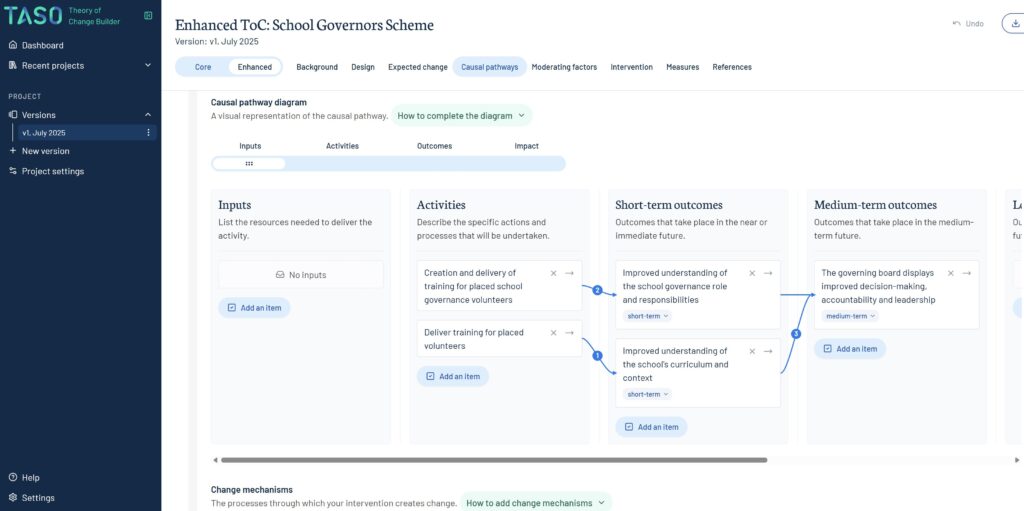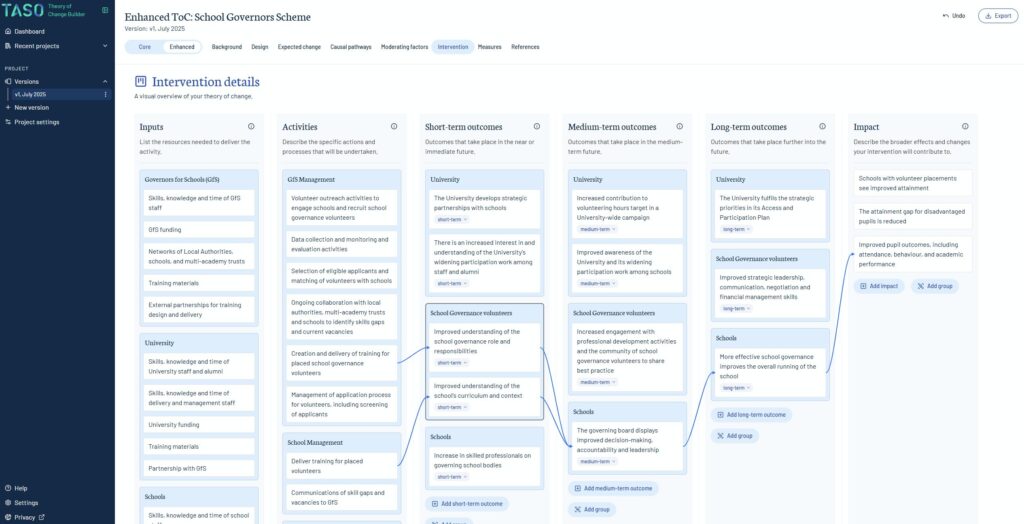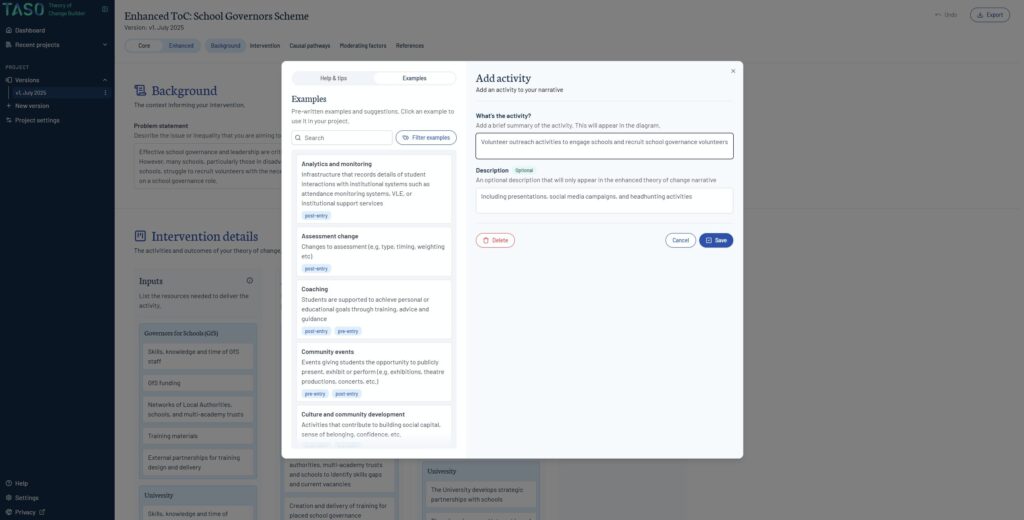The new Theory of Change Builder tool for TASO is now live — and I’m really proud to have worked on the project from start to finish, from the research and UX through to the final build.
This was such a great project to work on, with more than a few of my favourite things: interesting source material, deep UX problems to solve and a complex yet engaging build. And, of course, in TASO, a client who cares deeply about using research, evidence and testing to get the best possible outcome.
The project lives here, and is free to use if you want to play around (or even better, make your own Theory of Change!) — https://toc-builder.taso.org.uk/

The Challenge
In a nutshell, the challenge was to take a complicated, confusing process and turn it into something streamlined and usable.
Theories of Change are widely used across the education sector (and beyond) to plan and evaluate interventions: essentially, using text and structured diagrams to document ideas for solving a problem or improving outcomes, and how to measure your success (or otherwise). It’s important work, with genuine real-world consequences.
But it’s also time-consuming, perplexing, and concept-heavy. Our research and interviews revealed a fragmented landscape of tools, techniques and terminology. There’s a huge range of users, from experienced practitioners to staff struggling with unfamiliar concepts under time pressure. Existing tools are either too focused or too open-ended for the majority of users. Even the language used can be opaque at times.

The Outcome
The tool we developed is the answer to (some of) those problems. The most complex part of the build is the drag-and-drop editor that lets users assemble their Theories of Change, defining inputs, outcomes and impacts within a simple, defined structure.
But the rest of the app is just as important. We identified those people struggling with knowledge and resources as the primary audience — the experienced practitioners being more likely to use more free-form tools like Miro or Lucid — so the app is intended to support, guide and empower. It’s packed with carefully designed contextual tips, and examples that help without being too handholdy.
It’s also designed to fit into people’s workflows and encourage best practice. Based on conversations with staff in the sector and TASO we included features like local data storage, document versioning (multiple people described Theories of Change as “living documents”) and the ability to export to convenient formats like Word and PowerPoint.
With any long software project scope-creep is a constant peril, but Hannah and Pete at TASO were everything you want in client partners — knowledgeable, engaged, and responsive, generally a pleasure to work with — and we came in on time and on budget. The design was handled admirably by Adam at Creative Intervention, who did a wonderful job at creating a clean, modern interface for a complex tool.

What Next?
I’m really pleased with the features that made it into the project, but there’s a big icebox of ideas for the future too. Online storage and collaboration, interactive guides, diagram enhancements — and there’s a genuine use-case for AI here too, used judiciously to critique and guide rather than for wholesale automation.
So I’ve got my fingers crossed for that, but I’m also excited just to see the tool out there in the world. I hope that people in the sector find it useful, and it helps them turn their ideas into reality, and together we’ve made the world a little bit better than it was yesterday.
If you have a similar project you’d like to chat about then please do get in touch by emailing me at tom@acatcalledfrank.com — whether it’s to discuss ideas or get an estimate, I’m always happy to chat.